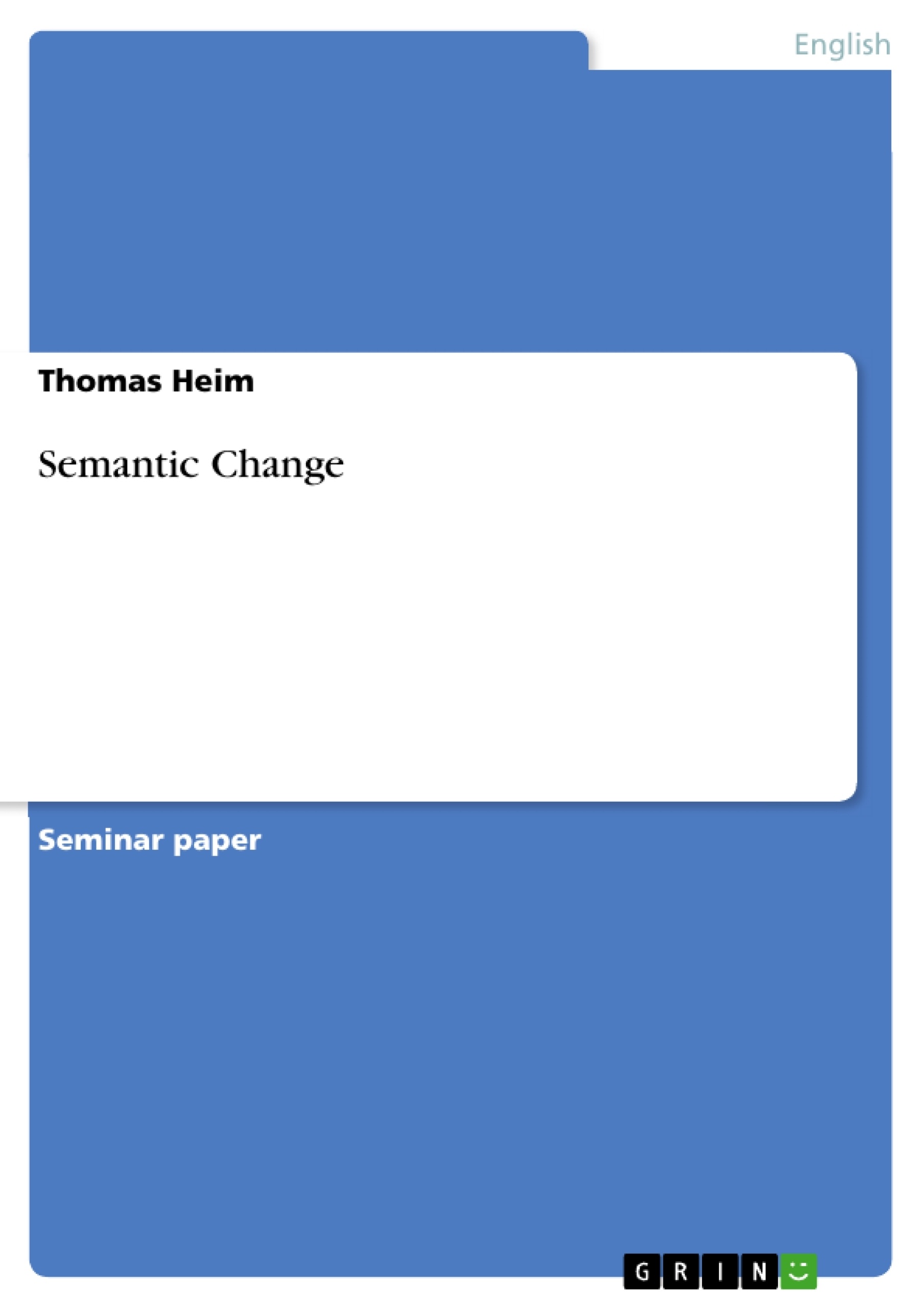“Semantic change deals with change in meaning, understood to be a change in the concepts associated with a word […]” (Campbell 1998: 255).
To some of you, Campbell’s definition may seem a bit simplistic. Some scholars, too (for example Blank whom we’ll be hearing of later on), argue that it’s not one meaning of word that changes, but
with semantic change a new meaning is added to the already existing meaning or meanings of a word and then this new meaning is lexicalised,
or one of the already lexicalised meanings is no longer used and becomes extinct.
I think Campbell’s definition can suffice as a basis for our little “immersion” into semantic change. And what is more important than a theoretically watertight definition is a “practical insight” into semantic change. So let’s have quick look on what exactly changes when words change their meanings.
Table of Contents
- 1. Teil: Ausführung
- 1. What is semantic change?
- 2. What is changing and how?
- 2.1 The notion of 'meaning'
- 2.2 The process of semantic innovation and lexicalisation (Blank 2001: 71-74)
- 2. Teil: Handout
- 3. Teil: Quiz + Lösung
Objectives and Key Themes
This paper delves into the phenomenon of semantic change within the English language. The primary goal is to provide an understanding of how word meanings evolve over time, highlighting the mechanisms and processes involved.
- The nature of semantic change and its impact on word meanings.
- Different aspects of 'meaning' including denotation, connotation, and register.
- The processes of semantic innovation and lexicalization, illustrated with examples.
- The impact of societal and cultural changes on word meanings.
- Examples of semantic change in various contexts.
Chapter Summaries
- 1. Teil: Ausführung
- This section explores the concept of semantic change, defining it as a change in the concepts associated with a word. It differentiates between innovative and reductive semantic change.
- The paper dives into the concept of 'meaning', distinguishing between denotation, connotation, and register. It explains how these aspects contribute to the understanding of a word's meaning.
- The process of semantic innovation and lexicalization is analyzed, highlighting the stages of association, innovation, and lexicalization. This process is illustrated with the example of the word 'mouse'.
Keywords
Key terms and concepts explored in this paper include semantic change, denotation, connotation, register, semantic innovation, lexicalization, and examples of evolving word meanings.
- Quote paper
- Thomas Heim (Author), 2003, Semantic Change, Munich, GRIN Verlag, https://www.hausarbeiten.de/document/48794


